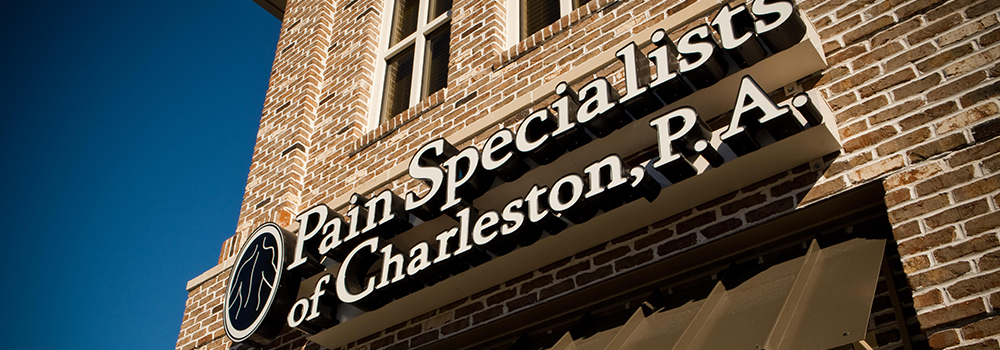You’ve likely watched a driver maneuver into a handicapped spot … then get out of the car with seemingly no difficulty. The absence of a visible injury typically earns a disapproving stare, but there might be more to the story than meets the eye.
People often judge an illness’s severity by its outward symptoms or the assistive equipment it requires, like a wheelchair or cane. However, according to the Invisible Disabilities Association, 74% of Americans who live with a severe disability or illness do not use any form of assistive equipment.
Complex Regional Pain Syndrome, or CRPS, is one condition that goes unseen. Considered an “invisible illness,” CRPS sufferers may look completely healthy on the outside.
Understanding an invisible illness can be tricky but speaking to someone experiencing one can be even more challenging. At Pain Specialists of Charleston, we believe in not only managing and alleviating pain but also providing knowledge of pain that is not always evident.
Keep reading to learn more about invisible illnesses, and to find out how to better understand someone suffering from pain you cannot see.

What is an Invisible Illness?
An invisible illness is defined as a physical, mental, or neurological condition that is not visible to others. For those suffering from an invisible illness, finding the correct diagnosis can be difficult. Many patients must undergo a process of elimination after reporting their symptoms for a diagnosis to be made.
In addition to CRPS, these conditions are often classified as invisible illnesses:
- Rheumatoid arthritis
- Fibromyalgia
- Lupus
- Migraine headaches
Many invisible illnesses share common symptoms like fatigue, headaches, and body pain – which cannot be tested for. CRPS signs and symptoms may include:
- Continuous burning or throbbing pain
- Sensitivity to touch or cold
- Muscle spasms and weakness
- Limited or decreased mobility in affected body part
Because symptoms may change over time and vary from person to person, CRPS can be very difficult to diagnose. Plus, symptoms may spread from the original source to elsewhere in the body.
Impacts of Living with an Invisible Illness
Living with an illness that is difficult to diagnose or has subjective symptoms can make each day a struggle. Because an accurate diagnosis requires more than a simple blood test, many sufferers are left with debilitating pain. Bouts of depression and anxiety may follow, along with feelings of isolation.
It can be very difficult for others to understand exactly what CRPS patients are going through and why they may seem “different” than before.
If you are experiencing severe or prolonged pain, seek help from a pain management clinic near you. Our staff understands the effect pain can have on your quality of life, and we make it our mission to help you find relief in Charleston, SC.
Finding the Right Words: Speaking to Someone with an Invisible Illness
People who are close to someone with CRPS or other invisible illnesses may struggle to find the right words to say. Showing compassion and comfort is key, so be sure to avoid saying the following:
- “You have what? I’ve never heard of it.”
- “You need to exercise more.”
- “Aren’t you feeling better yet?”
- “Maybe an antidepressant would help.”
- “But you look just fine.” or “You don’t look sick.”
- “You are taking too much medicine.”
- “You need to change your diet.”
- “It’s all in your head.”
- “Losing weight might help.”
- “If you just had a more positive attitude.”
This list, courtesy of Molly’s Fund, an organization that raises funds and awareness for Lupus, encourages swapping the phrases above for these:
- “How are you doing today?”
- “Is there anything I can do to make things easier?”
- “I am here for you, whatever you need.”
- “It must be very difficult to have a disease where you feel so awful on the inside but it doesn’t show on the outside.”
- “I am so sorry that you are going through this.”
- “I wish I could take your pain away.”
- “I hope you are feeling better soon.”
- “I will keep you in my thoughts and prayers.”
- “I may not completely understand your disease or what you’re going through, but I would like to.”
- “I am so sorry I judged you before understanding your disease.”

The Journey to Living Pain-Free Starts at Pain Specialists of Charleston
Living with an invisible illness can be isolating, but you don’t have to suffer in silence. When you speak with a pain management physician at Pain Specialists of Charleston, we make it our goal to get to the source of your pain and develop a treatment plan personalized just for you.
We treat pain related to CRPS, migraine headaches, and other conditions – as well as more generalized pain. Our qualified team uses the most up-to-date interventional pain management techniques.
If you think you or a loved one are suffering from CRPS, give Pain Specialists of Charleston a call at 843-277-6783 today to make an appointment. Or visit our website today!
Request Appointment | Contact Us | Meet Pain Doctors | Visit Us
Additional Helpful Articles:
What Should I Expect During My First Pain Management Appointment?
Interventional Pain Management: Everything You Need to Know
What Does a Pain Management Physician Do?
How Beneficial is a Medical Massage for Chronic Pains?
Can Ozempic Cause Muscle Pain?
Get to Know Pain Management Physicians:
Our Services:
Diagnosis | Treatment | Interventional Pain Management | TRICARE | Wellness | Clinical Trials | Worker’s Compensation | Neurology | Imaging/ MRI
(Updated September 2024) Published November 2016
